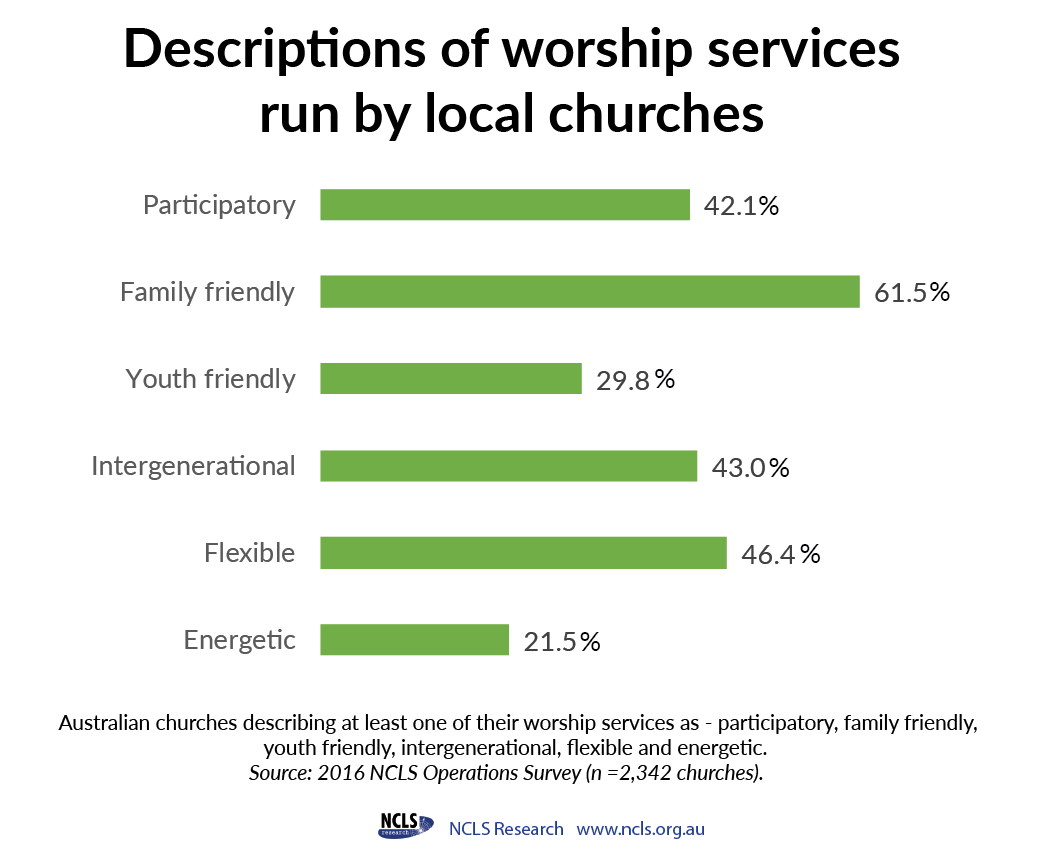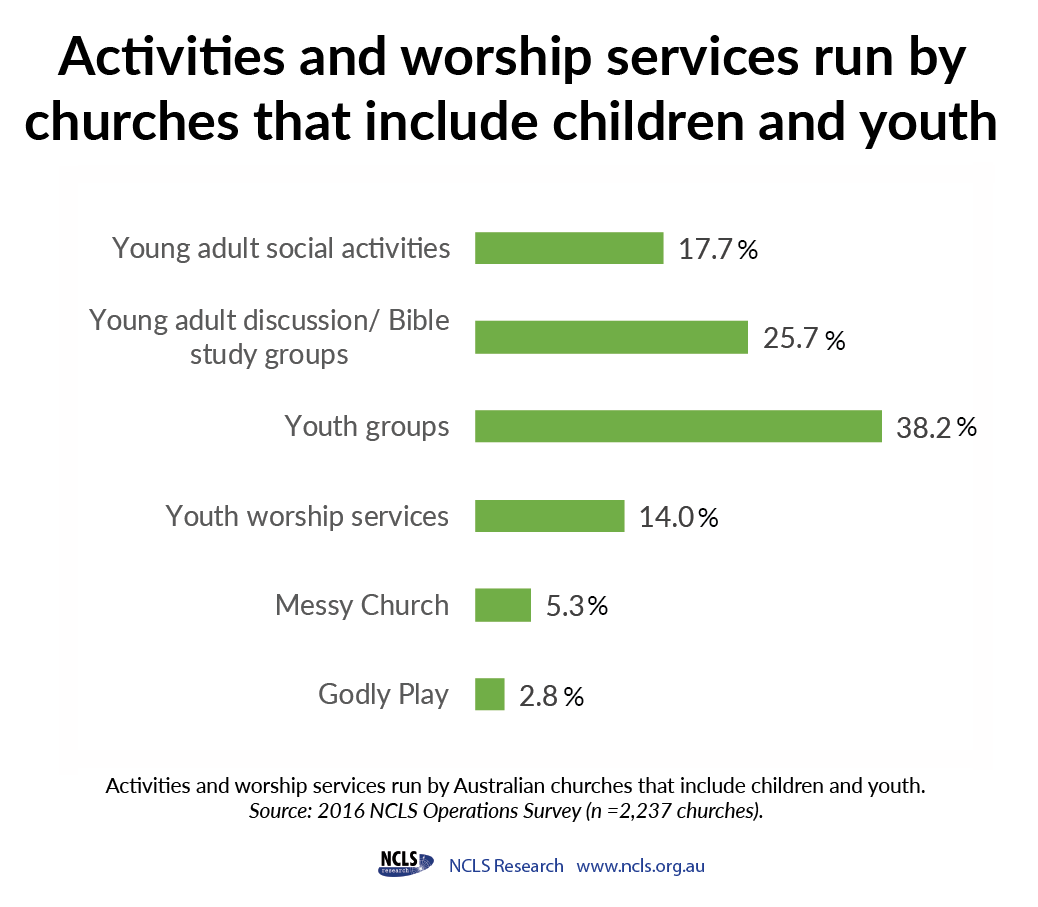Some churches are trialling new ways to engage multiple generations and involve younger attenders.
The 2016 NCLS found that a proportion of churches ran at least one worship service described as participatory, family-friendly, inter-generational, flexible and energetic. A few churches ran Messy Church or Godly Play as interactive approaches to worship.
Others intentionally involved young people up-front in leading worship. Just over a third of churches utilised technology commonly accessed by younger generations, such as providing Wi-Fi and posting sermons or homilies online.
Participatory, family-friendly, inter-generational, flexible and energetic: changing styles of church
In the 2016 NCLS, churches were asked to describe the type of worship services they held. Results show that some churches were using innovative styles and structures in their worship services to include and involve multiple generations, including children and young people.
The findings illustrate a whole range of adjectives to describe church worship services that may be relatively new on the liturgical landscape. Some 42% of local churches described at least one of their worship services as participatory; 61% as family-friendly; 30% as youth-friendly; 43% as inter-generational; 46% as flexible; and 22% as energetic.

Involving children and teens up front
A strong minority of churches described intentional approaches to involve children or teens in contributing to or leading their worship services. 2016 NCLS results show that some 39% of Protestant and Anglican churches* said they held at least one worship service where children typically participated by speaking, reading, singing or performing. Almost half (48%) said that they held at least one worship service where teenagers typically participated in such up-front roles in worship services.
Focus on youth
In terms of running activities with and for younger generations, it was common for churches to run youth groups, services and activities. Some 38% of churches reported holding youth groups; 26% said they provided young adults discussion/ Bible study groups; 18% said they ran young adult social activities; and 14% of churches said they held youth worship services.
Churches were also asked to report the number of young people from different age brackets that were involved in the church’s ministry activities. Some 63% of churches reported at least some children under 5 years old being involved; 63% had children aged 5 to 7 involved; 67% had children aged 8 to 11; 61% had youth aged 12 to 14; 56% had youth aged 15 to 18; and 48% of churches said they had young adults aged 19 to 25 years involved in their ministries.
Inter-generational approaches: messy, playful and inclusive
The inter-generational style of worship service is designed to engage many age groups, together, participating side by side. Children, teens, adults and seniors are equally invited to contribute and take part in worship. One example of such an approach is Messy Church, where multiple generations can be together, with all the fun, energy and mess that comes with a variety of ages and attention spans. Findings from the 2016 NCLS show that 5% of churches ran Messy Church services. Another example, Godly Play, a play-based approach was taken up by 3% of churches.

Going online to reach younger, digitally literate generation
Around a third of churches (34%) reported that they recorded their sermons or homilies and posted them on the internet. As device-based digital communication is widely used, particularly amongst younger generations, such strategies for online inclusion and participation can be beneficial.
Having Wi-Fi in public places of gathering is also increasingly common in Australian communities. Some 37% of churches in 2016 reported having Wi-Fi access within their church building. Churches can consider whether making Wi-Fi publicly available will help connection with increasingly digitally literate younger generations.
More information on churches' use of technologies and social media can be found in our article Bridging the tech divide:catering for the digital generation at church.
Retaining young people
The retention of young people in church life has been identified as a key indicator of church health and growth over 25 years of NCLS research. As churches engage and involve their younger generations, they invest in their future.
With families juggling school, sport and extra-curricular activities, churches are also wise to consider ways they enrich and enable family time where multiple generations can participate together in worship and faith formation activities. The role of parents in being an important role model in faith is also affirmed in our research and is discussed in our article Parents remain the most valuable role models of faith.
* N.B. Some results in this article were derived from survey questions only asked of Protestant churches. Sets of results are sourced from both Catholic and Protestant churches unless otherwise specified.



